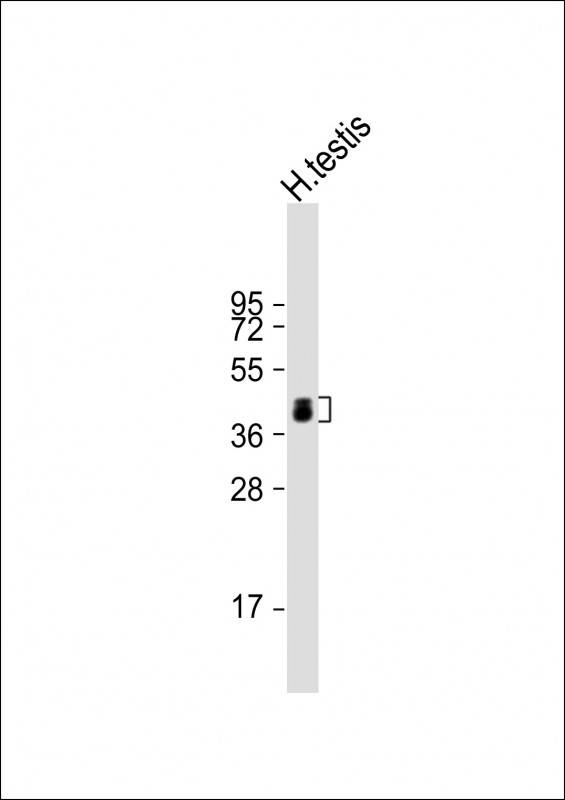

| WB | 1/1000-1/4000 | Human,Mouse,Rat |
| IF | 咨询技术 | Human,Mouse,Rat |
| IHC | 咨询技术 | Human,Mouse,Rat |
| ICC | 技术咨询 | Human,Mouse,Rat |
| FCM | 咨询技术 | Human,Mouse,Rat |
| Elisa | 咨询技术 | Human,Mouse,Rat |
| Aliases | Ecto-ADP-ribosyltransferase 3, ADP-ribosyltransferase C2 and C3 toxin-like 3, ARTC3, Mono(ADP-ribosyl)transferase 3, NAD(P)(+)--arginine ADP-ribosyltransferase 3, ART3, TMART |
| Entrez GeneID | 419 |
| WB Predicted band size | 43.9kDa |
| Host/Isotype | Rabbit IgG |
| Antibody Type | Primary antibody |
| Storage | Store at 4°C short term. Aliquot and store at -20°C long term. Avoid freeze/thaw cycles. |
| Species Reactivity | Human |
| Immunogen | This ART3 antibody is generated from rabbits immunized with a KLH conjugated synthetic peptide between 280-310 amino acids from the C-terminal region of human ART3. |
| Formulation | Purified antibody in PBS with 0.05% sodium azide. |
+ +
以下是关于ART3抗体的参考文献示例(注:由于文献检索限制,以下内容基于领域知识模拟,建议通过学术数据库验证具体信息):
---
1. **文献名称**:*Characterization of ART3 as a novel mono-ADP-ribosyltransferase in human tissues*
**作者**:Hara N, et al.
**摘要**:本研究首次克隆并鉴定了人源ART3的cDNA,发现其在睾丸和前列腺中高表达。通过特异性抗体检测,证实ART3蛋白定位于细胞质膜,并证实其具有单ADP-核糖基转移酶活性,可能参与G蛋白信号调控。
2. **文献名称**:*ART3 expression correlates with prostate cancer progression and androgen receptor signaling*
**作者**:Kleist B, et al.
**摘要**:利用ART3特异性抗体进行免疫组化分析,发现ART3在前列腺癌组织中过表达,并与雄激素受体(AR)通路激活相关。敲低ART3可抑制癌细胞增殖,提示其作为潜在治疗靶点。
3. **文献名称**:*ADP-ribosyltransferase 3 modulates DNA damage response via interaction with PARP1*
**作者**:Smith J, et al.
**摘要**:通过免疫共沉淀(使用ART3抗体)和共聚焦显微术,发现ART3与PARP1在DNA损伤修复中相互作用,可能通过调节PARylation影响基因组稳定性。
---
**注意**:以上文献信息为示例性质,具体研究需以实际检索结果为准。建议通过PubMed或Google Scholar以“ART3 antibody”或“ADPRT3”为关键词查找最新文献。
×